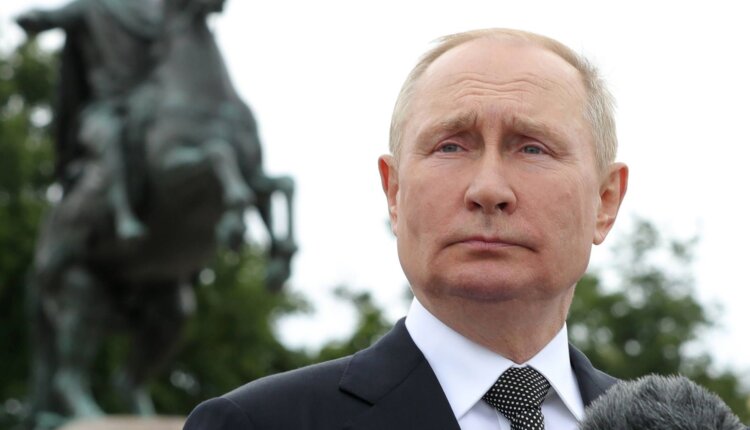The flames are raging high on the Russian border. If you look east in the Finnish town of Virolahti, you can see them with the naked eye. The reason for the fire? Excess natural gas.
While in Europe and especially in Germany die fear of a natural gas shortage is increasing, there are increasing indications that Russia no longer knows what to do with its valuable raw material.
“Last autumn there were already reports that that Russia’s storage facilities were almost completely full,” says Malte Küper, energy expert at the Institute of German Economy (IW) in Cologne. “Russia’s natural gas storage facilities are huge, but they are also reaching their limits given the enormous quantities that would normally flow to Europe.”
This in turn means that Russia has to burn the natural gas that it neither wants to sell to the West nor can store. Because Russia cannot simply reduce the production of natural gas.
Natural gas is produced through wells: due to the pressure, the raw material itself flows to the surface via the pipe inserted into the ground of the Ukrainian energy company Naftogaz, at the beginning of the war in an interview with the “Frankfurter Allgemeine Zeitung”.
Russia would therefore have to produce a volume similar to that before the war – only now there are no buyers. The state-owned company Gazprom says something different, reporting increased deliveries natural gas to Asia.
Energy expert Küper, however, is skeptical. “Russia wants to give the impression that it can make up for the lack of deliveries to Europe with deliveries to China,” he says. “The numbers contradict this narrative.”
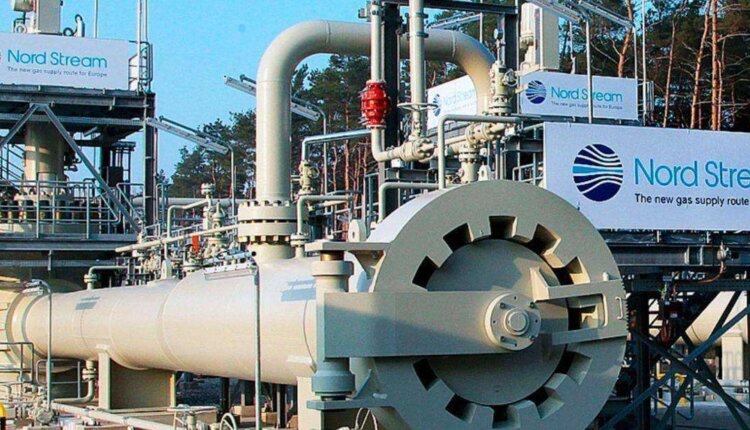
What he means by that: Just two years ago, Russia sent almost 80 percent of its natural gas to Europe and Turkey exported.
Only ten percent ended up in Asian countries. Although Moscow China and India now as the big ones As alternative buyers, as “friends of Russia,” the truth is likely to be different: the two countries can’t even come close to filling the gap that Europe is leaving as Gazprom’s trading partner. Russia, of course, doesn’t want to reveal this weakness. Rather, Gazprom emphasizes that the company was able to increase its exports to China by around 60 percent. Only: 60 percent of a small amount still remains a small amount.
Last year Germany alone imported more than four times as much natural gas from Russia than China – almost 46 billion cubic meters, which according to IW data flowed to Germany, compared to 10 .6 billion cubic meters that China received.,Russia would have to have sent almost 8.5 billion cubic meters of natural gas to China in the first half of 2022 if the neighboring country increased its imports by 60 percent compared to last year. That doesn’t even come close to making up for the losses that Russia is having to cope with as a result of the slump in its European business.
Nonetheless, Russia keeps asserting itself in a position of strength. At the International Economic Forum in St. Petersburg in June, Gazprom boss Alexei Miller trumpeted how Russia will dominate the global economy in the future: “The contours of the new economic structure will be determined by the Russian Federation,” he said.
The Gazprom boss justified his thesis with the fact that the “emphasis in goods-money relations had shifted to the goods side” and referred to the high inflation rates in Europe, which Russia is heating up due to the reduced natural gas supply volumes.
Yes it’s not that simple: It’s not just Europe that has failed to reduce its dependency on a trading partner in recent years. Russia, too, has lost room for maneuver due to a lack of investment. “Since Russia, contrary to the global trend, has been hesitant to invest in LNG in recent years, it continues to be heavily dependent on the existing pipeline infrastructure. And it is clearly geared towards Europe.” , explains IW expert Küper.
That means: Russia alone does not have the logistical ability to supply China with enough natural gas to offset the losses with the European business – even if there were demand from China.
At the moment, we are connecting once a pipeline China and Russia. The pipeline, called Kraft Siberian 1, can transport up to 38 billion cubic meters of natural gas annually. However, according to the IW, it was recently less than 50 percent utilized – even though Russia is luring China with large discounts and discounts on the natural gas price.
In addition, even if the pipeline were fully utilized, it would not even have the volume of Replace Nord Stream 1. The important Baltic Sea pipeline between Russia and Germany has a volume of up to 55 billion cubic meters per year.
But the most sensitive point is the geographic location of the pipelines. Europe gets most of its natural gas from gas fields in Siberia. From these fields, the pipelines only go to Europe. So Russia does not have the option of simply diverting the natural gas intended for the European market to China or India. Russia has been planning a new natural gas pipeline for years.
The Power of Siberia 2 is designed to connect the fields in Siberia directly to China, but there are many obstacles. Russia has been in talks with China on this since 2006, so far without any results. This is unlikely to change in the future. “Not only the distance of almost 3,000 km, but also the challenging terrain and the lack of access to technology and know-how from Western companies due to the sanctions make construction difficult,” says Küper Finns can observe on the border with Russia.
Aerial photos from NASA suggest that Russia has had to burn natural gas since June. It is therefore questionable whether Russia will further reduce deliveries to Germany. If even less natural gas flowed to Europe through Nord Stream 1, Russia would not only expose itself to the risk of severe contractual penalties – it also simply does not have the capacity to temporarily store any more natural gas.
However, this is hardly a reason for the West to be happy . The flaring of the gas releases large amounts of black carbon into the air, which accelerates the melting of snow and ice when it lands on them. Many Finns in the border area have already reported to state media how black dust is gathering in their neighborhoods.
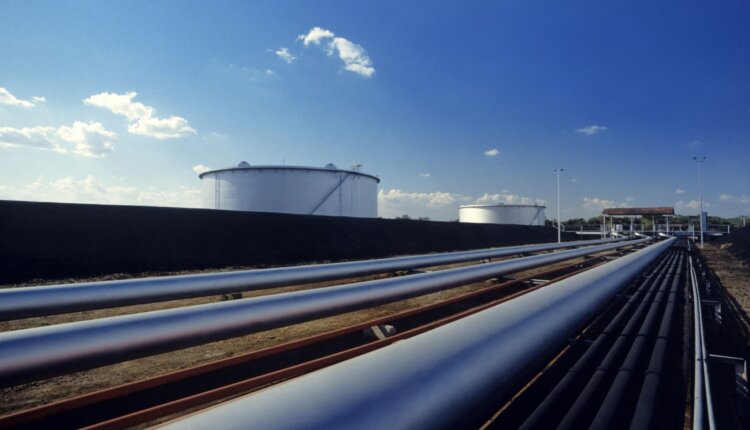
Burning the natural gas is driving climate change like this further on. And until trade relations between Russia and Europe normalize, Gazprom is likely to continue to flare off excess natural gas. The flames on the border between Finland and Russia will probably continue to blaze in the future.
Billions for companies that are not in need? Because of the gas levy comes Federal Government always more in need of explanation.
Criticism is also growing in the traffic light coalition, calls for improvements are becoming louder. The federal government has so far stuck to the surcharge, which will ensure significant price increases for gas customers from autumn.
The surcharge is intended to compensate for the sharply increased procurement costs of large importers such as Uniper due to the throttling of Russian natural gas deliveries, in order to protect them from bankruptcy and the German energy system to keep from collapsing.
All natural gas customers should pay an additional 2.4 cents per kilowatt hour, private households as well as companies. About half of all apartments in Germany are heated with natural gas. (Greens) but there is broad criticism – because companies that are doing well economically could also benefit from it.
According to Trading Hub Europe, a joint venture of the gas transmission system operators, twelve companies have registered compensation claims According to information from the German Press Agency, the gas surcharge should go to Uniper and the former Gazprom Germania.
Uniper is the largest importer of Russian natural gas, the federal government had decided on a rescue package worth billions because of its financially tense situation.
The President of the Federal Network Agency, Klaus Müller, told the “Neue Osnabrücker Zeitung”: “I can understand the anger, but there is only one small part of the levy to companies that don’t really need it to avert insolvency I’m sure that future amendments to the law will ensure more transparency But I think the levy is more targeted than its reputation, even if it hasn’t been openly comprehensible up to now.”
RWE and Shell already had declares that he wants to bear losses himself. Others could now follow this example: A spokesman for the Austrian energy company OMV said on Thursday that the German subsidiary had announced compensation claims as a natural gas importer within the meaning of the law. “Whether and to what extent claims exist and whether they are claimed depends on further examinations and decisions.”
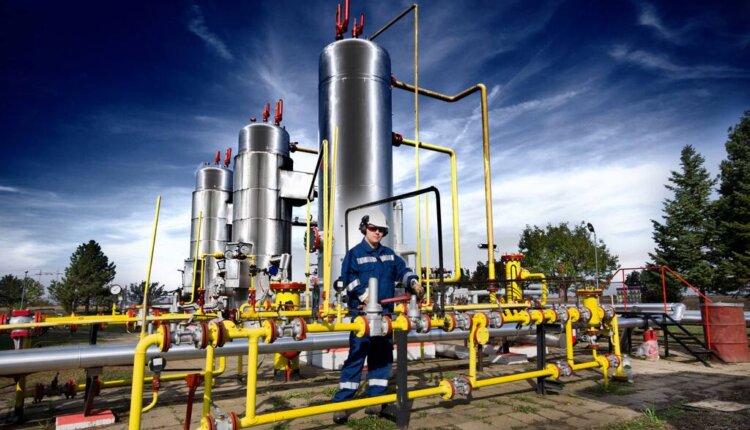
OMV made billions in profits in the first half of the year. The Swiss energy trader Axpo and the German energy group EnBW, for example, also achieved a surplus, whose subsidiary VNG wants financial compensation through the levy continue to supply under the originally agreed conditions.
This caused significant losses at VNG. In order to mitigate further losses in the foreseeable future, the Executive Board of VNG decided to apply for the natural gas levy. “The allocation system does not enable VNG to make any profits, but reduces losses.”
According to the Ministry of Economic Affairs, importers of Russian natural gas to Germany are entitled to apply for cost compensation. They would have to be directly affected by a loss of natural gas import contracts and the corresponding quantities.
The contracts would have to provide for direct, physical delivery to the German natural gas market area.,The legal situation is one thing – the political assessment is another. “Of course, it also disturbs my sense of justice when companies that make big profits elsewhere now want to shift their costs to consumers at an early stage,” said Greens co-chairman Ricarda Lang on Thursday in Berlin.
At the same time, it is legally quite difficult to limit the data situation to individual companies that are systemically important or threatened with insolvency. That’s why political solutions are now needed, said Lang – and reiterated her call for an excess profit tax for energy companies. But that shouldn’t be possible with the coalition partner FDP.
The FDP in turn asked Economics Minister Robert Habeck (Greens) to make improvements. “As Free Democrats, we are committed to ensuring that only companies that are in a market-threatening imbalance are supported with the natural gas levy,” said the energy policy spokesman for the FDP parliamentary group, Michael Kruse.
SPD sees open questions. “The SPD parliamentary group will insist that only applications for financial relief from companies whose existence is threatened by the current price trend can be successful,” said parliamentary group leader Matthias Miersch. “That must be guaranteed.” It is not for nothing that the Bundestag has enshrined a two-month right of parliamentary intervention in the Energy Security Act.
“At the same time, questions arise as to how far we can take alternative ways of relieving these companies – beyond a levy, such as through the use of taxpayers’ money.” However, the federal government has not wanted to go this route using taxpayers’ money, with reference to the ever-scarcer budgetary funds and the traffic light with its majority in the Bundestag should prevent another way: The CDU wants to overturn the natural gas levy in the Bundestag.
“This gas surcharge should be abolished,” said CDU General Secretary Mario Czaja. The Union faction will apply in the next week of the Bundestag to withdraw it. The Bundestag could decide this according to the Energy Security Act.
“The fact that the Union wants to stop the natural gas surcharge in the Bundestag shows that it is continuing its energy policy blind flight of recent years and has learned nothing from the mistakes of the past, which brought us to the current situation have,” said Kruse.
Which countries are the largest Natural Gas suppliers of the hottest energy products at present?
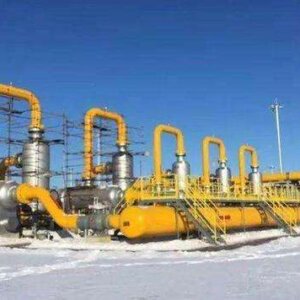
10. Algeria
Although not many people have heard of this country, it is the largest country in Africa, including the entire Mediterranean and the Middle East, and the fourth largest country in Africa. It belongs to the Middle East and has a large land area, so you can even know that the country’s main source of economy is the sale of oil and gas.
According to statistics, Algeria’s proven oil reserves are about 1.7 billion tons, accounting for 1% of the world’s total reserves and ranking 15th in the world. It is mainly Saharan light oil, which is of high oil quality. The proven recoverable reserves of natural gas are 4.58 trillion cubic meters, accounting for 2.37 percent of the world’s total reserves and ranking 10th in the world.
In terms of natural gas production, Algeria ranked tenth last year at 100.8 billion cubic meters, the third largest natural gas supplier in Europe after Russia and Norway. In fact, if the time is pulled back to previous years, Algeria will once be the world’s second largest exporter of natural gas.
9. Norway
Like most European countries, Norway’s land area is not large, but it is the most resource-rich country in Europe except Russia. Coal, hydropower, offshore oil, natural gas, etc. are envied and hated by its neighbors. Natural gas, in particular, produced 114.3 billion cubic meters in 2021, but its own consumption accounted for only 0.1% of the world.
As a result, Norway has a large amount of natural gas exports. Last year’s natural gas exports accounted for more than 60% of the country’s total merchandise exports and became the second largest natural gas supplier in Europe.
However, in the second and third quarter of 2022, when natural gas prices were the most popular, Norway suffered frequent strikes by workers and lost a lot.
8. Saudi Arabia
The most impressive thing about this local tycoon country in the Middle East must be the treasures they have hidden underground. Saudi Arabia’s proven crude oil reserves are 36.35 billion tons, accounting for 16% of the world’s reserves, ranking second in the world, and natural gas reserves are 9.23 trillion cubic meters, ranking sixth in the world.
Interestingly, although Saudi Arabia’s total natural gas production reached 117.3 billion cubic meters last year, their import and export of natural gas is still zero.
However, with the influx of European orders and the continuous discovery of new gas fields, Saudi Aramco has begun to increase the extraction of natural gas.
According to the country, it will start exporting natural gas in 2030 and export in large quantities, when the country will become the third largest natural gas exporter in the world.
7. Australia
As a country that monopolizes a continent, Australia lacks resources the most. However, compared with other mineral resources, Australia’s energy resources do not prevail, especially in natural gas.
The current proven reserves are only 1.36 trillion cubic meters. Even so, Australia is never stingy about the exploitation of natural gas. The country’s natural gas production reached 147.2 billion cubic meters in 2021. At this rate, the proven reserves were hollowed out in less than a decade.
That’s why Australia has gradually reduced its natural gas exports. Last year, the country’s natural gas consumption was only 40 billion cubic meters, but its exports were less than 10 billion cubic meters, and the rest are hidden.
6. Canada
Like Australia, the land is vast and sparsely populated. The difference is that Canada has much more oil and gas resources than Australia.
Canada’s proven crude oil reserves are 167.7 billion barrels, ranking third in the world, after Venezuela and Saudi Arabia; the proven natural gas reserves are about 2.1 trillion cubic meters, 1.55 times that of Australia. In 2021, Canada’s natural gas production was 172.3 billion cubic meters, most of which were exported.
5. Qatar
It is also a local tycoon with no shortage of minerals. Qatar’s oil is much worse than Saudi Arabia. It has proven oil reserves of 2.5 billion tons, ranking 13th in the world. However, natural gas has completely crushed Saudi Arabia – Qatar’s natural gas reserves of 24.7 trillion cubic meters, ranking third in the world.
That’s why European countries flew to Qatar when Russia was “gas cut off” and natural gas was seriously scarce, and a large number of orders were placed. Qatar’s natural gas exports are expected to increase significantly in the future.
Qatar’s natural gas production in 2021 was 177 billion cubic meters.
4. China
China is vast and has a lot of natural gas reserves. Especially in recent years, after the discovery of some large new gas fields similar to Fuling shale gas fields, the output of natural gas has increased significantly. By 2021, China’s natural gas production has reached 209.2 billion cubic meters.
However, due to the popularity of natural gas in recent years, demand has risen sharply – by 2021, the consumption has reached 3787 billion cubic meters (an increase of 13% year-on-year), China is still one of the world’s largest natural gas importers, with Russia’s main source of imports.
3. Iran
Iran may be one of the countries with the least matching resource ownership and economic income in the Middle East. The country has proven oil reserves of 158 billion barrels, ranking fourth in the world: natural gas has proven reserves of 41 trillion cubic meters, ranking second in the world.
The United States has made “excessible contributions” to this situation. However, in recent years, Iran has gradually made breakthroughs, especially in the production and export of natural gas.
In 2021, Iran’s natural gas production was 256.7 billion cubic meters, and due to excessive demand for orders, they have announced an additional 130 million cubic meters per day in 2022.
2. Russia
From coal to oil to natural gas, the world’s energy demand is constantly escalating, but it has never escaped from Russia’s palms. After all, the largest country has the highest energy reserves. Eurostat has released data showing that in 2021, the whole European region was more dependent on Gazprom more than 49%, that is to say, 49% of Europe’s energy imports came from Russia.
Although the European Union and Russia have torn their faces now, it seems unbearable to completely cut off the connection. After all, Russia’s proven natural gas reserves exceed 48 trillion cubic meters, accounting for about one-third of the world’s proven reserves.
In 2021, the total production of Russian natural gas was 701.7 billion cubic meters, accounting for 17% of the global total production.
1. United States
The United States will replace Russia in the first place, which will be somewhat unexpected. After all, in terms of reserves, the United States has proven total natural gas reserves of 12.9 trillion cubic meters, ranking fifth in the world and about a quarter of Russia’s reserves. Moreover, the natural gas in the United States is mostly shale gas, and the extraction cost is much higher than that of Russia, and there is no competitive advantage.
In addition, it should be reminded that Europe and Russia are still in their honeymoon in energy cooperation in 2021, unlike now.
It seems that we have to admire the “prospectiveness” of the United States, because when energy prices were very low in 2020, natural gas production fell year-on-year, and in 2021 it suddenly doubled year-on-year, especially in the fourth quarter of 2021. Sure enough, by 2022, natural gas prices had soared out of control due to the natural gas crisis in Europe, and the United States made a huge profit from natural gas extracted last year.

